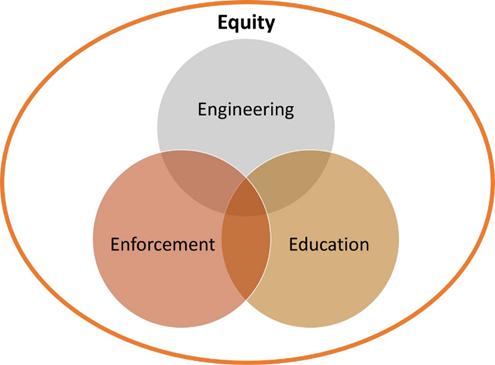
1 minute read
SELECT, IMPLEMENT, AND EVALUATE EFFECTIVE AND EQUITABLE POLICY AND PROGRAM STRATEGIES
Program and Policy Interventions: Comprehensive Approaches to Reduce Injuries and Violence

Advertisement
Dr. William Haddon, Jr., the first director of the National Highway Traffic Safety Administration (NHTSA), is credited with launching the modern field of injury prevention in the 1960s. In the decades since the Haddon Matrix was introduced, researchers and practitioners have used the matrix to analyze how programs and policies can intervene to prevent injuries. Dr. Haddon’s comprehensive approach is reflected in the “three Es” of injury prevention: environment, education, and enforcement. For example, dramatic reductions in motor vehicle crash fatalities and injuries are the result of many prevention strategies at work simultaneously: safer cars and roads (the environment), individual use of seat belts and avoidance of drunk driving (education leading to changes in behaviors and social norms), and enforcement of motor vehicle safety laws (such as primary belt laws and DUI citations) that discourage these behaviors. However, the current “Three E’s” approach does not consider the factors that cause injury and violence to disproportionately affect certain populations. By incorporating equity as the “Fourth E”, social determinants of health (SDOH) can be addressed to decrease the severity and likelihood of injury and violence in an entire community.
C O R E C O M P O N E N T 3


